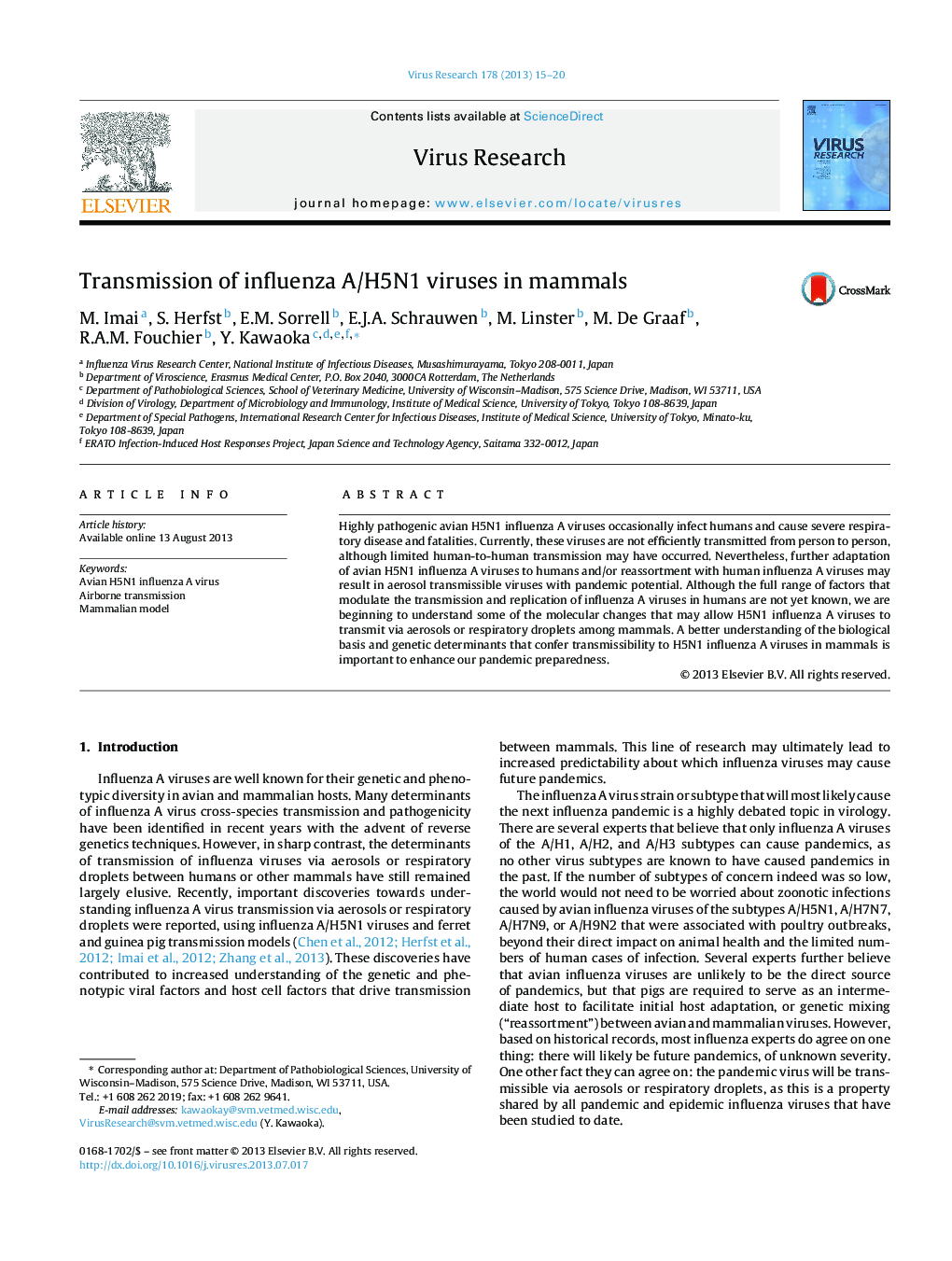| Article ID | Journal | Published Year | Pages | File Type |
|---|---|---|---|---|
| 3428537 | Virus Research | 2013 | 6 Pages |
•H5N1 viruses may acquire airborne transmission through mutations in HA and PB2 and/or reassortment with human strains.•Airborne transmission requires high levels of virus replication in the upper respiratory tract of mammals.•In addition to HA-receptor specificity, HA protein stability probably affects airborne transmission.•An understanding of key factors that confer airborne virus transmission is necessary to enhance our pandemic preparedness.
Highly pathogenic avian H5N1 influenza A viruses occasionally infect humans and cause severe respiratory disease and fatalities. Currently, these viruses are not efficiently transmitted from person to person, although limited human-to-human transmission may have occurred. Nevertheless, further adaptation of avian H5N1 influenza A viruses to humans and/or reassortment with human influenza A viruses may result in aerosol transmissible viruses with pandemic potential. Although the full range of factors that modulate the transmission and replication of influenza A viruses in humans are not yet known, we are beginning to understand some of the molecular changes that may allow H5N1 influenza A viruses to transmit via aerosols or respiratory droplets among mammals. A better understanding of the biological basis and genetic determinants that confer transmissibility to H5N1 influenza A viruses in mammals is important to enhance our pandemic preparedness.
